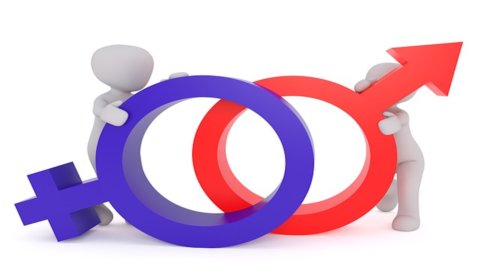The conference “Gender gaps in the Italian economy and the role of public policy”, on the occasion of the presentation of volume 3/2019 of the Italian Economy magazine, founded by Mario Arcelli.
Governor Ignazio Visco opened the conference showing worrying and, at the same time alarming, data regarding the female participation in the Italian labor market. According to numerous studies, the female participation rate recorded in 2018, equal to 56%, is the lowest among the countries of the European Union. Furthermore, women receive significantly lower wages than men and have greater difficulty in occupying leadership positions, not only in the private sector, but also in the public sector.
Numerous researches and studies have proven how a greater presence of women can bring important benefits to the economic growth of our country, leading to an expansion of the product, as was recorded in the United States from 1960 to 2010. In Italy, unfortunately, the situation is quite dramatic: over 8 million women are currently inactive. A greater participation of the fairer sex would bring positive effects not only in quantitative terms, but also in qualitative terms: women have, in fact, higher levels of education than men, with strong skills and abilities, especially as regards interpersonal and communicative relationships, which are of crucial importance to date. If we examine the data relating to the level of education, it can be seen that currently, women are ahead of men, especially in the age group between 25 and 44, of which 30% have a tertiary education qualification , compared to 20% of men. We must also consider the delay in schooling, according to some surveys, women obtain a higher diploma and degree mark on average and in a shorter time.
However, an important gap remains for science subjects. According to the2018 PISA survey of XNUMX year olds from OECD countries, the gap between the two sexes is among the highest, as regards the share of female graduates in scientific disciplines.
If, on the one hand, women have demonstrated superior skills in the field of education, on the other hand, their low participation in the labor market is of great concern. The reasons for this phenomenon and the procedures to be adopted - as underlined by Governor Visco - must be studied in depth.
One of the reasons lies in the gender imbalance in the division of family tasks. According to the 2017 Eurobarometer survey on Gender Equality, the 51% of those interviewed believe that it is the woman who has to deal with the management of the house and the children, while in Sweden it is only 11%. For this reason, in our country the fertility rate continues to drop, equal to 1,29 children per woman in 2018, significantly the lowest among the countries of the European Union, together with Malta and Spain. From all these data emerges the need to stimulate the presence of women in the labor market, without, however, disadvantaging fertility.
Alessandra Perrazzelli of the Directorate of the Bank of Italy intervened by asking a fundamental question: "Where does this disparity between men and women in the Italian economy come from?". According to the deputy general manager there are two elements to take into consideration. The first of a social nature, according to certain stereotypes the woman is a wife and mother. The second of a cultural nature, women have more difficulty entering the world of work, due to the lack of support for families, especially in the offer of services capable of alleviating the burden of the family burden. This negatively affects women's chances of making a career, as they cannot aspire to more important positions. Although in recent years there has been an increase in women in administrative boards in Italy, thanks to the Gulf-Moscow law, equal to 40%, the achievement of gender equality is still a long way off.
Interesting food for thought was provided by some of the authors of the articles in the journal. Francesca Barigozzi highlighted, on the basis of Istat data, in the "use of time" survey, the need to overcome social norms on gender roles within the family and increase the availability of childcare services, in order to allow the female gender to be able to combine work and family life. Francesca Carta opened a parenthesis on how welfare characteristics affect the presence of women in the labor market. The level of Italian public spending is quite high, around 48% of GDP. However, 42% goes to social security expenditure and only the remainder to households. A greater offer of public services for children together with the extension of parental leave could, according to some studies, increase female employment. Finally, Giovanna Vallanti's contribution concerns gender inequality in the field of employment protection regulations, according to which the rigidities of the labor market induced by the inefficiencies of the judicial system penalize the fairer sex.
At the conclusion of the conference, the intervention of the Minister of Equal Opportunities and the Family, Elena Bonetti, who, on the memory of Tina Anselmi, the first female minister in Italian history, quoted her words: “When women engaged in battles, victories were victories for all of society. The politics that sees women at the forefront is a politics of inclusion, respect for diversity, peace". Her strong words, which inspired Minister Bonetti, who supported the need, in reality, to establish a difference between the two sexes. Men and women are different, so we shouldn't speak of a greater influx of women into employment, representing a minority, but for the contribution that they can actually give to the economy, for their capacity for connection and intuition. Increase training, reduce the gender gap in the scientific field, but above all aim at a community vision, a real understanding of diversity, in which women can establish themselves in the world of work without renouncing the maternal experience.
In summary, as demonstrated by the data, a greater participation of women would represent a boost for the economy. Unfortunately, the lack of support for women, not only culturally, but in terms of asylums, leave, economic incentives and maternity leave, is a brake on the relaunch of female employment in the Italian economy. Although gender equality is a well-known and widely addressed topic, concrete actions continue to be scarce, still leaving a large gap between the two sexes in the economic and employment sector.





